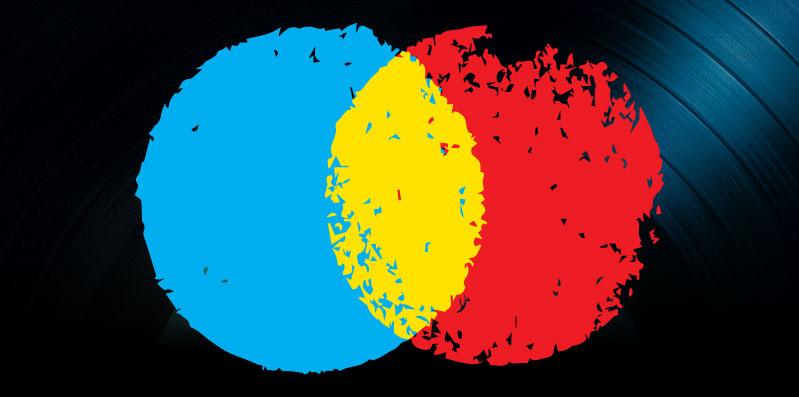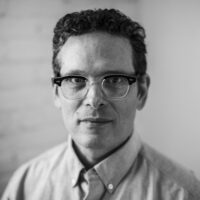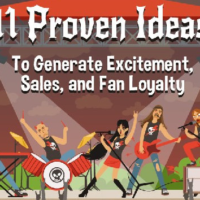
Monetizing Music Imagery
Kevin Arnold is a San Francisco-based music and technology entrepreneur and the founder of OpenAura, a platform that gives artists the opportunity to control and monetize their photos, artwork, information and more in order to give fans a deeper, dynamic experience on music apps and services worldwide. Kevin founded San Francisco’s internationally renowned Noise Pop Festival back in 1993. Now, Noise Pop Industries (NPI) is an entity that manages a busy calendar of local cultural events year round throughout the Bay Area, culminating in the Treasure Island Music Festival. Kevin first began working with databases while working at Oracle during the Bay Area tech boom in the ‘90s. He got into the digital music sector at online music startupListen.com in 1999. As Director of Data Services for Listen, Kevin guided the growth and development of Listen’s complex music metadata systems, data integration tools, and music royalty data warehouse for the Rhapsody digital music subscription service. In 2003 he founded IODA – the Independent Online Distribution Alliance – to help independent labels find their way in the new world of digital music. He grew this into one of the largest digital distributors of indie music in the world, supporting thousands of labels and generated hundreds of millions of dollars in revenue for the independent label community. After the acquisition of IODA by Sony Music Entertainment (SME) in 2009, Kevin served as a senior advisor to SME’s Global Digital Business group. With a mandate to focus on core problems facing the evolution of the industry, he came up with the concept of OpenAura, which was subsequently seed-funded by SME in April 2013.
Kevin spoke with me about his experiences building music and other online platforms since the dawn of the Digital Age. He also explained how OpenAura helps musicians use images, bios and other visual content to build more robust brands and the challenges artists, managers and record labels face when it comes to licensing and monetizing this content.
Musician Coaching:
Thanks for taking some time to talk, Kevin. Tell me how you first got interested in the music business.
KA:
I was a big music fan as a kid and played guitar in a band while growing up in San Antonio. I eventually moved out to Berkeley for college to study architecture.
It actually took me a while to get back into music, but I started promoting concerts. So, the first part of my music business life was in the festival and promotions business. I started a music festival called Noise Pop in 1993 that is still going after 22 years. We also do a bunch of other music festivals in the San Francisco Bay area, the biggest one being Treasure Island.
Still, music was more of a hobby for me for a while. I was a booking agent and also managed a band. I worked with a bunch of bands that went through the mill in the early ‘90s and got chewed up and spit out, which, at the time, made me decide I really didn’t want to be in that business. I went down the technology route and worked my way into system and database administration. After working at Oracle for a while, I found myself in the digital music world working at Listen.com in the late ‘90s.
I started at Listen.com in 1999 as their first database administrator. I was in the great position of building all their initial data systems – everything from content, to import and export data exchange, content management tools, royalty reporting and a lot of other elements. It was during that time that I had the initial idea for IODA – in 2001, which was way too early for it.
I was at Listen.com for about four years. During the bust in the Bay Area in 2003, I left the company right before they were bought by RealNetworks. At that point, I decided I was going to start IODA. I thought I would build it on the side, get another job and grow it organically. Then, iTunes launched in 2003, and it was pretty clearly off and running.
That was the genesis of IODA. We built it into one of the largest distributors out there within the course of about nine years. We did a deal with Sony, then a few years later, in 2012, we merged with The Orchard. At that point, I decided it was time for a change. My energy really comes from building things, and I’ll have ideas all the time, some of which I’ll pursue.
The idea for OpenAura came about while I was still building IODA. Dennis Kooker, who runs global digital business at Sony said, “We’d like to keep working with you.” And I had the opportunity to come work on some strategic problems, which gave me the opportunity to build what became OpenAura in its new incarnation. We started the company last April.
Musician Coaching:
I do want to hear more about OpenAura. But, as someone who built one of the pioneering music platforms in the Digital Age at Listen.com, do you foresee there will be a lot of problems with streaming music services as they continue to become more popular? And what do you think of the current digital distribution models, from the aggregator perspective?
KA:
I think it’s an interesting market right now. It’s been constantly disrupted since the early 2000s and continues to be disrupted. I think there are many different levels of service and need in the marketplace. Everyone from large labels and catalog companies to individual artists need help. There is a lot of room in the market for a lot of different types of companies. Still, I think there is competition on many levels.
That being said, I think there is still more opportunity now for innovation. Being a representative of a large set of content and a catalog and trying to maximize its potential for all your clients across all these regions throughout the world is a big job. As the different markets change and evolve, there is a lot of work that requires some degree of global organization and skill to get done effectively. I think there are still a lot of interesting things to come across that landscape, from a model and services standpoint. One of those things might be helping content owners represent new types of content beyond audio and video aspects that they have been charged with managing today.
Musician Coaching:
And that brings us to OpenAura. Tell me how and why it is so important for people to manage their images online and how that works.
KA:
I wouldn’t think of it in terms of, “Let’s manage these images online.” What we’re really trying to do is create a toolkit of assets, content and information from any source that represents artist identity in order to enable the marketplace to build more engaging, richer user experiences for music fans. At its core, OpenAura is a platform that aggregates content. You can really think of it in the same way you think about IODA or something similar. It aggregates content from many different places across a fragmented market. It is visual content information. That content includes content from open and social sources of content that are already out there online. It also include artist-owned content, as well as that large set of really valuable and rich content that comes from third-party owners, like record labels, image rights holders and archives, editorial publishers, magazines and blogs online. It’s basically anything out there that represents who an artist is. It’s all your images, regardless of who owns them or how they got into the system. It’s also reviews, interviews, features that represent who you are.
We feel that in the current system, the concept of artist identity is typically very antiquated. It’s based on a 1980s press kit version, which includes a bio and a photo. We think the hundreds of thousands of pieces of content much better represent who the person really is to the fan. It also recognizes that this content, when curated and contributed to by the artist as well as other content owners, has value. We want to monetize that and then also share that revenue stream with the artists, curators and the content owners themselves.
Musician Coaching:
I’m familiar with the concept behind OpenAura, but I think if I was a musician visiting your website and was not really in the public eye yet or would never be, I would wonder what type of platform this was.
KA:
It’s a business-to-business platform. It’s similar to The Orchard or IODA, which aggregate audio and video content and then distribute it and monetize it through all these other services and platforms that create experiences around this content and around the artists themselves. Right now, there’s visual content that surrounds music – bio and photos – that is licensed in many of these same places, but the artist doesn’t have control over it and is unable to participate in it.
So, at OpenAura, we’re aggregating this other set of content and allowing the artist to have a say and making that information rich, compelling and engaging for fans. And then we’re licensing this content out to other platforms and sharing the revenue, in the same way you would share it with audio and video. The goal for us is to go beyond the bio and photo and have hundreds and thousands of pieces of information and images that people can build into much richer experiences.
Musician Coaching:
And when you are pulling photos, how do you circumvent all the rights that surround them? I think that’s more challenging than people realize.
KA:
Yes, I think that’s a problem, and one of the real challenges in the marketplace that we’re hoping to solve, because the landscape around ownership and organization of images is very disparate and fragmented. In many cases it isn’t artists or labels who own many of these images; it’s individual people or photographers and other types of content owners.
On the other hand, you have a landscape where there are already tons of images and pieces of contents published by and about the artist through a number of various open platforms or social platforms that have content redistribution methods and terms of service that essentially allow for them to be shared, viewed and published in many different contexts.
We start out by analyzing all that information that an artist has already published about themselves through places like YouTube, Twitter, SoundCloud, Facebook, Tumblr, etc. and then analyzing and indexing all this content – pointing to knowing what the most popular and recent content is around an artist’s identity. Then we let the artist come in and claim that “Aura” and take control over that set of content. Ultimately, as we go towards future announcements, we license content from third-party content owners that the artist can choose to include in their Aura to expand upon that initial content base that we’ve created.
Musician Coaching:
Is there an automated way of contacting content owners?
KA:
Ultimately, it’s a self-service platform. We’ll work with artists, artist managers, labels and then leading content owners. And then the system is open for anybody who has created content about an artist. They can come into the system and submit the content by uploading it to the system. And then you can get it to the artists for possible inclusion into their content streams. It’s essentially an open marketplace trying to create a royalty model that will provide the proper incentives and compensations for all those contributors to come on board.
Musician Coaching:
I think I have a great overview of the problem in the marketplace and the solution your platform offers. When you went to create OpenAura and were polling artists of all sizes and at all levels of notoriety, what were the biggest disconnects you noticed between artists and their images? For example, did you notice artists weren’t interacting with fans or using all the content they had? Or, was there confusion in that community about who owned what?
KA:
That’s generally exactly the case. Most of the managers and active artists at labels trying to release, merchandise and market music know these types of problems exist. The current state of the industry is that bios and photos that represent artists are entirely out of artists’, labels’ and managers’ control. In many cases, the content is inaccurate and out of date. There will be old band members or deceased band members represented or other inaccurate/incorrect information in bios. And there is no ability for the music service, label, manager or artist to go in and easily get the content changed or updated. There’s not a lot of attention being paid to it. And just fixing it so they can have control over that is a core part of the equation.
Beyond that, there is the monetization situation. There’s a marketplace surrounding this content and information that doesn’t really serve the parties well. And still, it’s being monetized, but the artists aren’t participating in that. And all the other premium content owners that have high-quality content about artists don’t have a way to take it to market. And these are the problems we’re trying to solve.
Musician Coaching:
A lot of my readers are new to the music business. When they are going out there and making sure they are getting different images associated with their brand, what types of rights should they set up for this content? What types of rights do you secure through OpenAura?
KA:
The platform is built to accommodate a variety of situations. Whether it is the photographer or the artists themselves that own the images, we want to encourage the content owner to make their content available to the artist for use so they can be properly compensated.
That being said, if you do own the rights yourself, you can upload that content into the system and include it in your Aura as part of that clue. But if you don’t, you have options. You can either buy out those rights, or leave commercial rights to the photographer and have them come into the platform as a content owner and partner and still have access to use the content in your Aura, which is your goal. The idea is to create a rich content set that can be published via the APIs.
The question here is going to be around historical agreements and ownership of these images. Sorting through that is what I think will be most challenging. In many cases, I think labels will need to go back and look at their original agreements or even contact original photographers for information about the images they want to include. It’s a long-term challenge. We are trying to build a new fabric of content and rights infrastructure, and it’s going to take some time.
Musician Coaching:
I would guess the databases of managers, artists and labels are not uniform, which means pulling that information en masse will be extremely difficult.
KA:
As I said before, it will take time. On the one hand, you have organizations that are used to this and have big archives of content with known rights around them. But OpenAura is a new type of business model. For example, think about an image catalog owner. They are typically licensing their content for editorial use in association with a story in a magazine or on the Web or for advertising, print, etc. We’re talking about monetization of content that represents the whole identity of an artist, which will only be used in conjunction with that artist in contexts where fans are engaging with the artist and experience. On one hand, there’s value to a content owner just in that association: The artist is saying, “These are the best pieces of content that represent me.” On the other hand, it’s valuable content that we believe should be monetized.
Musician Coaching:
And I imagine there are going to be a lot of aggregators of content and rights that don’t even know what they own.
KA:
Some of them won’t know what they own. They will be able to bring them online over time, and the content space will get richer.
The reason we are able to come to market with already-robust Auras that have hundreds and thousands of pieces of content for hundreds and thousands of artists is because the platform is machine-generated – auto-curated by the system, which pulls content about artists that has already been published in a lot of different places. We have a starting point of information that can be accessed, used and built upon as the rest of the content owners come online.
To learn more about Kevin Arnold and the work he does with OpenAura and beyond, visit the OpenAura website. You can also follow Kevin on Twitter.







